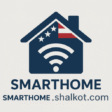Energy Saving Automations: Reduce Your Bills with Smart Tech
Cut your electricity costs and live more sustainably with smart home automations that do the work for you
Introduction: Smart Tech Meets Smart Savings
The rising cost of electricity is a growing concern for homeowners. Luckily, smart technology offers powerful ways to cut consumption and save money without sacrificing comfort. With the right energy saving smart home automation, you can reduce waste, lower bills, and minimize your carbon footprint.
In this guide, we’ll explore top smart devices and automation ideas that deliver measurable energy savings. Whether you’re new to smart homes or already tech-savvy, these strategies are practical and affordable.
Want to build your foundation first? Start with our Smart Home Setup Guide.
1. Use Smart Thermostats for Efficient Climate Control
Heating and cooling account for over 50% of home energy use. A smart thermostat like Nest, Ecobee, or Honeywell learns your schedule, adjusts temperature when you’re away, and even integrates with weather data.
- Set up zones for different rooms
- Automatically lower heating/cooling when no one’s home
- Receive energy usage reports and tips
Learn how to secure your network when using smart thermostats in our Smart Home Network Security Guide.
2. Smart Lighting with Motion and Scheduling
Lights left on unnecessarily are a silent energy waster. Smart bulbs like Philips Hue, LIFX, or TP-Link can:
- Turns off automatically when no motion is detected
- Dim based on time of day
- Turn on only when needed, e.g., at dusk
Combine motion sensors with smart bulbs in rooms like hallways, bathrooms, and basements for maximum savings.
3. Monitor Usage with Smart Energy Meters
Real-time energy monitoring devices like Sense, Emporia Vue, or Wiser Energy give you visibility into where your energy is going. These tools:
- Detect which appliances are consuming the most power
- Alert you when usage spikes
- Help you make informed changes
Knowledge is power—literally! Once you know where energy goes, you can automate accordingly.
4. Automate Smart Plugs and Power Strips
Many electronics draw power even when “off.” Smart plugs let you cut power completely when not in use. Features include:
- Turn off devices on a schedule or remotely
- Monitor energy use per plug
- Integrate into routines like “Away Mode.”
Ideal for TV setups, coffee makers, gaming consoles, and chargers.
5. Optimize Blinds and Curtains with Smart Controls
Natural light affects both temperature and lighting needs. Automate blinds to:
- Close during hot afternoons to reduce cooling load
- Open in the morning for warmth and brightness
- Sync with sunrise/sunset schedules
Learn more in our post on living room automation.
6. Use Presence Detection to Reduce Standby Consumption
Smart home platforms like HomeKit, SmartThings, and Google Home allow presence-based automation. Examples:
- Turn off the HVAC and lights when no one is home
- Activate low-power mode for appliances
- Shut down entertainment systems automatically
Combine GPS, Wi-Fi, and motion sensors for accurate detection.
7. Automate High-Consumption Appliances
Appliances like washing machines, water heaters, and ovens can be optimized too. Try:
- Scheduling operations during off-peak electricity hours
- Delaying the start when solar panels are charging
- Shutting off heating elements after use
Consider smart appliances or smart plugs with energy monitoring.
8. Smart Routines for Everyday Energy Efficiency
Automate your energy savings with routines like
- “Good Night”: Turns off lights, sets thermostat to energy-saving mode
- “Away”: Disables heating, appliances, and lights
- “Eco Mode”: Reduces brightness, shuts off unnecessary devices
Set routines using Alexa, Google Assistant, or Apple Home.
9. Solar and Battery Integrations
If you’re using solar panels or home batteries, automate when your devices consume power:
- Charge EVs when panels are active
- Run appliances during solar peak hours
- Avoid grid consumption during high-rate periods
These automations turn your home into a mini power plant—efficient and eco-friendly.
10. Receive Energy Usage Alerts
Smart home apps can notify you of:
- Unusual spikes in energy use
- Appliances left running
- Time-of-use rate changes
Use platforms like IFTTT or Zapier for advanced alerts and automation workflows.
Wrap-Up: Smart Tech, Smart Bills
Energy saving isn’t just good for your wallet—it’s good for the planet. With the right smart home tech and simple automations, you can make a real impact on both.
Whether you’re just starting or upgrading, visit Smart Home by Shalkot for more guides, comparisons, and how-tos to transform your home into an energy-efficient sanctuary.

